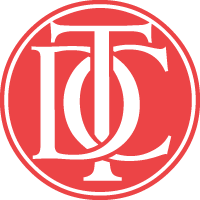American Type Design & Designers
David Consuegra
Review by Alex W. White
Where does type come from? What inspires its design? Are type designers artists? They certainly can be: type design requires extreme and very specific sensitivity. All the type designers I know have a quirkiness that sets them apart from other designers. American Type Design and Designers presents the foremost practitioners as whole persons, and shows their alphabets in the context of their typographic applications. As you may suspect, each informs the other.
Here is a book I’ve been wanting to bring to your attention from the day I received a copy three months ago. I have plenty of opportunity to pick and choose between the books that are sent to the TDC: this book rates very highly.
American Type Design and Designers was written as a labor of love by David Consuegra over ten years. Consuegra, who earned an MFA from Yale, is a professor emeritus at the Universidad Nacional de Colombia and lives in Bogotá. His passion is evident on every page. His essays on the designers are lucid and reveal their human side. We know that Cheltenham was designed by Bertram G. Goodhue (1869-1924), but did we know that Goodhue managed a New York City architectural firm and oversaw the design of the Neo-Gothic St. Thomas’ Church as he was designing his modern adaptation of Nicolas Jenson’s 1470 face? Or that its long ascenders and short descenders are a result of Goodhue’s personal theories on legibility, which emphasized word shapes by ascenders? Or that Cheltenham was the first type released simultaneously as a hand set font and as Linotype matrices? Or that the letters were drawn 14” high? Sure, some loathe Cheltenham, named for the Cheltenham Press in New York, whose owner commissioned Goodhue for the design. Its design was to reflect current tastes. But knowing the background of this and the other 329 typefaces covered in this book will inform your design thinking.
.
Here is the meat of the book: American Type Design and Designers shows about 350 typefaces and profiles sixty-two type designers from Ronald Arnholm (1939- ) to Robert Wiebking (1870-1927). The essays that accompany each designer’s work is set in a face that designer made. This adds immeasurably to our feeling for the characters described, both typographic and human. One example stands out to this reviewer: the essay on Gerry Powell, who designed Stencil in 1937, is mercifully brief. Stencil has no lower case and is not well-suited to text settings. Perhaps his Stymie Bold Condensed, an extension of Sol Hess’ 1936 Stymie family, would have served better. It would have been about as bold, but at least it has a lower case.
.
American Type Design and Designers has an extensive, 24-page Chronology of Type-Related Events. It lists events by year, with American events separated from European by a system of indention. A typical example from 1937, one of five entries for that year, reads: “By this time, German typographer Jan Tschichold begins to question, and eventually reject, the principles stated in his Die neue Typographie (1928) as well as the use of sans serif typefaces that he now identifies with German fascist imagery.”
The book also has a four-page Comparative American/European Type Chronology that lists typeface designs and their year of release. It uses the same indention system as the Chronology of Type-Related Events to indicate American or European types. If you ever had to defend the choice of using, say, Fairfield for a story on the early years of World War II, knowing that it was designed by Rudolph Ruzicka in 1940 would be helpful. Or what the other four significant faces released that year were. Of course, finding any face by name is easy through the very thorough Index. So if you know Fairfield, but not the year, you will will have five citations, including a complete showing on page 224.
Another feature of this book is a complete history and description of the eight most important U.S. type foundries: Adobe, A.T.F., ITC, Letraset, Linotype, Ludlow, Monotype, and Photo-Lettering.
The thirty-page illustrated glossary is so complete, it could be its own book. Besides the expected entries, like Aldine Oldstyle, Ball terminal, Contour typefaces, and Humanist script, ATD&D also covers somewhat less typical entries like Legibility Group (Linotype’s 1922 effort to develop faces for increased legibility, including Ionic No.5, Excelsior, Corona, Electra, and Fairfield), Modulation (variation in stroke thickness), Ordinal numbers (number sequence, as in 1st, 2nd, etc.), and Plakatstil (German poster style).
The book has one drawback. It is printed on thin paper, which allows significant show-through, compromising the book-as-object.
The bibliography lists one hundred and seventy-five books, encompassing just about every worthwhile typographic book ever printed. Read any thirty of them and you will become an omnipotent typographer.
In every other way, this is an essential book. Advanced students will get a context of type designer’s work and a good idea of the passion they must have for minute details as well as the more obvious legibility and readability issues. American Type Design and Designers is a long overdue resource and a welcome addition to every typographer’s bookshelf.
Editor’s Note American Type Design and Designers is published by Allworth Press, the same publisher of some of the reviewer’s books. The quality of American Type Design and Designers speaks for itself and, we hope, mitigates even the appearance of conflict of interest. And, we might add, if society has come to the point where even typographers’ integrity is questionable, heaven help us all.



